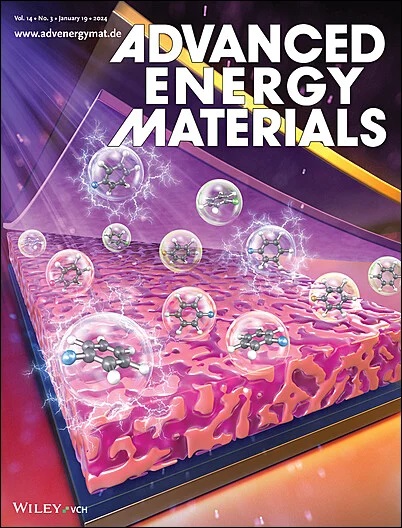高熵阳离子无序岩盐型阴极的短程有序模型
IF 24.4
1区 材料科学
Q1 CHEMISTRY, PHYSICAL
引用次数: 0
摘要
了解高熵(HE)陶瓷的短程有序(SRO)对材料的组成和结构设计至关重要。本文提出了一种基于描述符交换算法的短程顺序交换(SROS)方法,该方法有效地构建了原子式SRO模型。通过特征选择和贝叶斯优化,与涉及显式拟合多体相互作用的传统方法相比,该方法显着减少了计算需求,同时保持了高精度,中子对分布函数数据的实验验证了这一点。SROS方法被应用于研究阳离子无序岩盐(DRX)材料,这些材料有望成为具有高结构复杂性的下一代高能量密度阴极。利用SROS方法生成的结构,阐明了构型熵如何抑制HE - DRX中的SRO,这有助于降低无序温度,增强扩散动力学,最小化结构和体积变化。SROS方法在其他具有长距离无序和SRO特征的HE陶瓷晶体系统中具有更广泛的应用潜力。本文章由计算机程序翻译,如有差异,请以英文原文为准。
Modeling Short‐Range Order in High‐Entropy Cation‐Disordered Rocksalt‐Type Cathodes
Understanding short‐range order (SRO) in high entropy (HE) ceramics is essential for the compositional and structural design of the materials. Here, a Short‐Range Order Swapping (SROS) method is developed that constructs atomistic SRO models efficiently using a descriptor‐based swapping algorithm. Through feature selection and Bayesian optimization, the approach markedly reduces computational demands compared to conventional approaches that involve explicitly fitting many‐body interactions, while preserving high accuracy, as experimentally validated by neutron pair distribution function data. The SROS method is applied to investigate cation‐disordered rock‐salt (DRX) materials, promising candidates for next‐generation high‐energy‐density cathodes with high‐level structural complexity. Using the structures generated by the SROS method, it elucidates how configurational entropy suppresses SRO in HE‐DRX, which contributes to reduced disordering temperatures, enhanced diffusion dynamics, and minimized structural and volumetric changes. The SROS method holds potential for broader applications in other HE ceramic crystal systems characterized by long‐range disorder and SRO.
求助全文
通过发布文献求助,成功后即可免费获取论文全文。
去求助
来源期刊

Advanced Energy Materials
CHEMISTRY, PHYSICAL-ENERGY & FUELS
CiteScore
41.90
自引率
4.00%
发文量
889
审稿时长
1.4 months
期刊介绍:
Established in 2011, Advanced Energy Materials is an international, interdisciplinary, English-language journal that focuses on materials used in energy harvesting, conversion, and storage. It is regarded as a top-quality journal alongside Advanced Materials, Advanced Functional Materials, and Small.
With a 2022 Impact Factor of 27.8, Advanced Energy Materials is considered a prime source for the best energy-related research. The journal covers a wide range of topics in energy-related research, including organic and inorganic photovoltaics, batteries and supercapacitors, fuel cells, hydrogen generation and storage, thermoelectrics, water splitting and photocatalysis, solar fuels and thermosolar power, magnetocalorics, and piezoelectronics.
The readership of Advanced Energy Materials includes materials scientists, chemists, physicists, and engineers in both academia and industry. The journal is indexed in various databases and collections, such as Advanced Technologies & Aerospace Database, FIZ Karlsruhe, INSPEC (IET), Science Citation Index Expanded, Technology Collection, and Web of Science, among others.
 求助内容:
求助内容: 应助结果提醒方式:
应助结果提醒方式:


